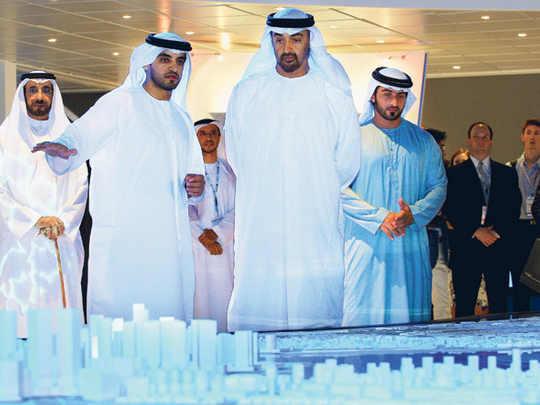
Abu Dhabi: Abu Dhabi will implement the Arab world's first sustainability rating mechanism to help assess the design and construction of buildings, communities and villas under construction, the Urban Planning Council (UPC) said Monday.
Ratings will apply to residential buildings, offices, retail spaces, schools and mixed-use projects. Community ratings will include developments supporting a minimum permanent residential population of 1,000 people, whereas developments designed to accommodate up to 30,000 people will require dividing individual districts, each with a separate application.
As part of UPC's wider goal to achieve a sustainable society in the long run, and to balance the four pillars of Estidama (sustainability in Arabic) environment, economy, culture and society a rating system on the design and development of construction projects will be mandatory from today.
The Pearl Rating System (PRS) will help address the sustainability of a given development throughout its lifecycle, from design to construction to operation, while providing developers with a detailed rating performance in relation to the four pillars of Estidama.
The system addresses seven categories, namely: integrated development process which encourages cross-disciplinary teamwork to deliver environmental and quality management throughout the life of a project; natural systems — conserving, preserving, and restoring the region's critical natural environments and habitats; livable communities to improve the quality and connectivity of outdoor spaces.
Precious water also stands at the heart of the PRS, to reduce water demand and encourage efficient distribution and alternative water sources. Resourceful energy — targeting energy conservation through passive design measures, reduced demand, energy efficiency and renewable sources; and stewarding materials — to ensure consideration of the whole-of-life cycle, when selecting materials; innovating practice — to help encourage innovation in building design, and construction to facilitate market and industry transformation.
The PRS will engage at the design phase of the project, and is relevant until construction is complete. Following that, construction rating is introduced for two years post a project's completion. The operational performance of an existing development will then be assessed for a minimum of two years, when a development has reached an occupancy of 80 per cent.
Explaining the PRS stages, Saoud Al Junaibi, Director of Development Review and Urban Design at UPC, told Gulf News: "Branding and communication materials identify the project as pearl design rated. Pearl rating ensures that the commitments made for the design rating have been achieved and pearl operational rating assess the built in features of an existing building, to ensure the building is operating sustainable."
Pearl Community Rating Levels
Requirement Pearl Rating Achieved
- All mandatory credits 1 pearl
- All mandatory credits + 55 credit points 2 pearl
- All mandatory credits + 75 credit points 3 pearl
- All mandatory credits + 100 credit points 4 pearl
- All mandatory credits + 125 credit points 5 pearl
The number of credit points available in a given section determines the weighting of that section
Credit Section Maximum Credit Points
- IDP - Integrated Development Process 10
- NS - Natural Systems 14
- LC - Livable Communities 38
- PW - Precious Water 37
- RE - Resourceful Energy 42
- SM - Stewarding Materials 18
- IP - Innovating Practice 3
TOTAL 159
Total excludes innovating practice credit points which are offered as bonus credits











